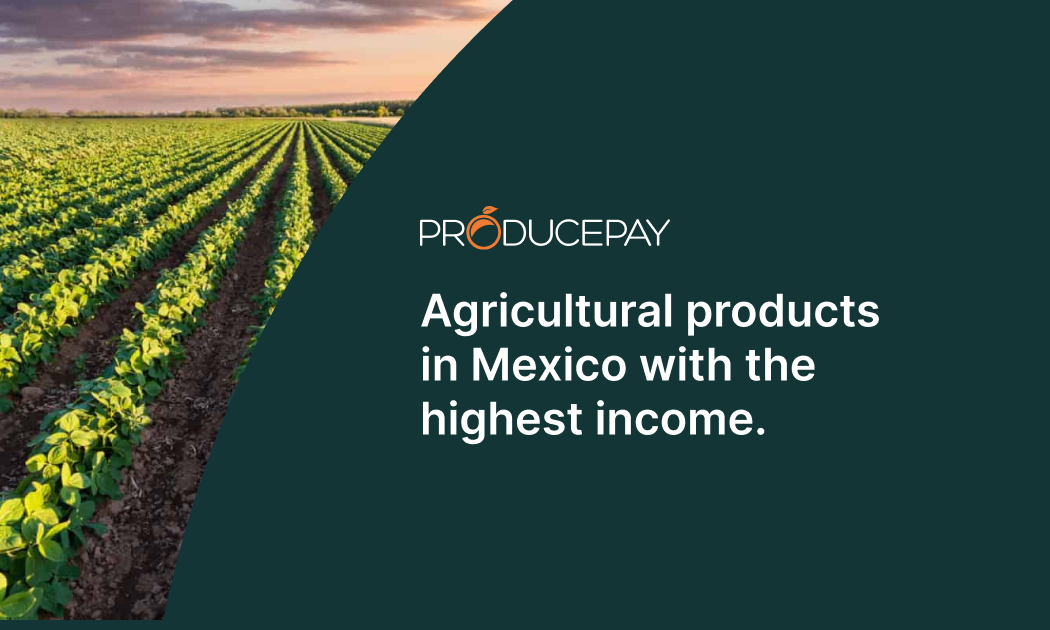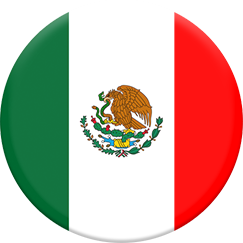
Agricultural products in Mexico with the highest income.
(Last update: April 17, 2025)
Mexico has become an agri-food powerhouse, ranking among the world’s top 10 producers of fruits and vegetables. Thanks to high-value crops like tomato, berries, avocados, and agave, Mexican agriculture has generated significant income, allowing many growers to thrive.
But what are the crops in Mexico that actually generate the highest income? Here we break down the agricultural products in Mexico with the highest gross income per hectare and the factors that drive their profitability.
The most profitable crops in Mexico by income per hectare
Before diving into the list, it’s important to understand that the most profitable crops are not necessarily those with the highest yield. Profitability depends on several factors, such as market price, production costs, export potential, and global demand. The figures we present reflect gross income per hectare, not net profits.
In this sense, the crop with the highest value per unit area in Mexico is agave, with more than 1.4 million MXN per hectare, according to the latest data from Mexico’s Agri-Food and Fisheries Information Service (SIAP).
Berries —raspberry, strawberry, blueberry, and blackberry— follow closely, reflecting their high demand and profitability. These crops have expanded across key producing states like Michoacán, Jalisco, and Baja California.
Among vegetables, tomato, eggplant, and taro stand out with income levels above 500,000 MXN per hectare. Profitable crops in northern Mexico include cucumber, asparagus, and grapes, which command strong prices in international markets.
| Agricultural Crops with the Highest Revenue per Area in Mexico | |||
|---|---|---|---|
| Crop | Harvested Area (ha) | Production Value (MXN million) | Gross Profitability (MXN/hectare) |
| Agave | 33,267 | 48,285 | 1,451,419 |
| Raspberry | 10,270 | 13,471 | 1,311,642 |
| Strawberry | 15,517 | 15,706 | 1,012,228 |
| Blueberry | 5,836 | 5,215 | 893,609 |
| Tomato | 49,461 | 36,508 | 738,126 |
| Eggplant | 1,710 | 1,108 | 649,030 |
| Blackberry | 10,885 | 5,583 | 512,866 |
| Taro | 495 | 250 | 505,399 |
| Chayote | 2,868 | 1,415 | 493,423 |
| Cucumber | 19,179 | 8,889 | 463,480 |
| Source: SADER-SIAP/ProducePay 2024 |
Other high-value crops in Mexico
Beyond this top group, there are more high-income agricultural products in Mexico. These include chayote, date, papaya, bitter melon, celery, pineapple, green chili, garlic, onion, melon, avocado, Brussels sprouts, cherry, and artichoke —all exceeding 200,000 MXN per hectare.
Of course, the return on investment for each grower depends on various factors. Even with high-value crops, favorable environmental conditions and market timing are essential to achieve good results.
In addition, adverse weather events or supply disruptions can shift demand and create new market opportunities, often benefiting growers who are able to respond quickly.
Boost your crop income in Mexico with specialized financing
To fully tap into the income potential of high-value crops like berries and tomatoes, it’s essential to have access to capital early in the growing season.
ProducePay’s Pre-Season Financing provides working capital to cover essential expenses and invest in better farming practices, infrastructure, and technology to improve yield and quality.
Having fast, transparent financing aligned with the agricultural cycle can make all the difference when it comes to seizing profitable market windows. Learn how Pre-Season Financing is helping growers boost their crop income.
Source: SIAP

